
Udon
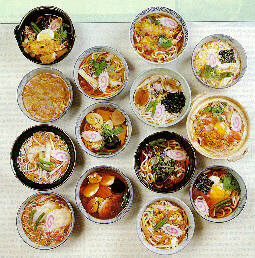
Take strong wheat flower, a pinch of salt and some water and put them together to form dough. Then take the dough and knead thoroughly, flatten and cut into long, thin strips. Boil the strips or steep them in broth. This forms the Japanese food known as Udon.
The more the dough is kneaded the richer the taste.
The Chinese were probably the first people to eat noodles. The first noodles were brought to Japan from China about 1,250 years ago in the Nara Period (710-794) and became popular in the Edo period (17th-19th centuries).
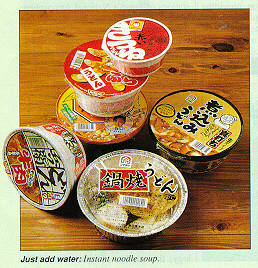
Most of the Udon eaten now is produced by machines. The Udon comes in two forms: dried and boiled. The boiled ones are the most popular since they have a texture that is closer to home made.
To make kake-udon or su-udon take some udon noodles and pour hot soup over them. Add shredded onion, shichimi (a seven-spice mixture formed of red pepper, sanshoo pepper pods, mandarin orange peel, black hemp seeds, white poppy seeds, nori seaweed bits and white sesame seeds).
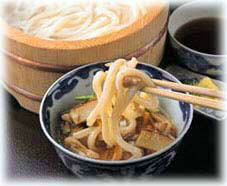
Health-wise the udon noodles supply carbohydrates. If you add shrimp tempura to them you have your protein and fat. The shredded onion provides vitamin C, carotin and fiber. The shichimi contains various minerals.
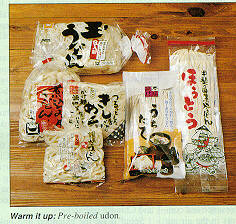
Other varieties of udon include kishimen, which are flat noodles, and soomen, which are ultra-thin noodles.
Udon is usually eaten with a soy-sauce based broth. Sometimes the broth is kept separate from the noodles and sometimes the two are served in the same bowl.
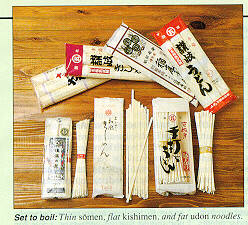
Then there is a sort of "speciality" udon, Udo de Sky, which is udon which is served on Japanese airplanes. The hiragana characters at the top are u-do-n su-ka-i, which translates into "is it noodles (udon)?" Thus, the traveling Japanese person can help themselves to some typical Japanese food no matter how far from home they are.
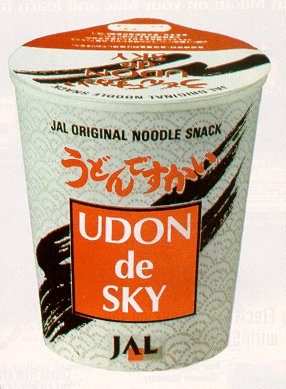
|